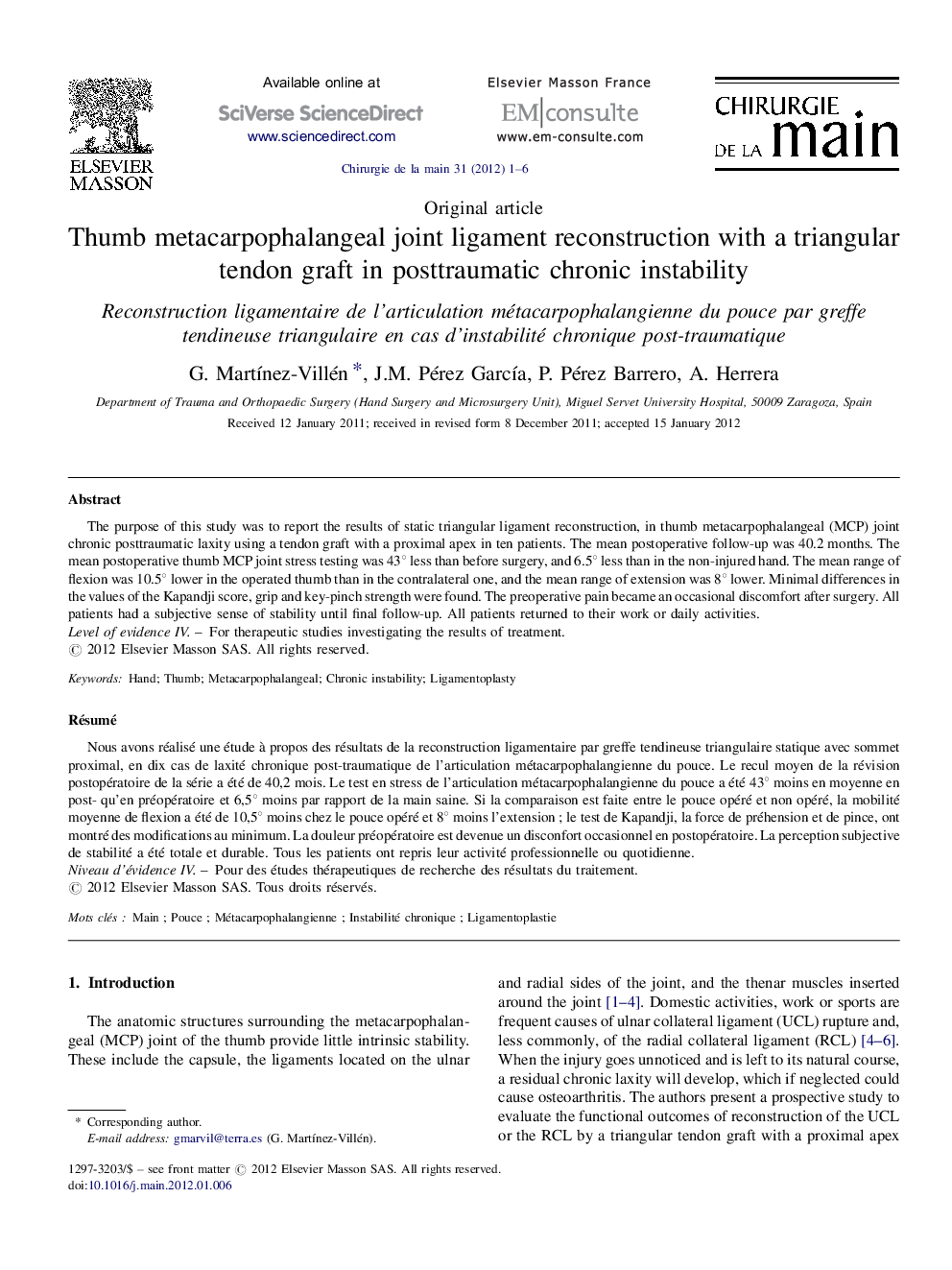| کد مقاله | کد نشریه | سال انتشار | مقاله انگلیسی | نسخه تمام متن |
|---|---|---|---|---|
| 4049084 | 1264822 | 2012 | 6 صفحه PDF | دانلود رایگان |

The purpose of this study was to report the results of static triangular ligament reconstruction, in thumb metacarpophalangeal (MCP) joint chronic posttraumatic laxity using a tendon graft with a proximal apex in ten patients. The mean postoperative follow-up was 40.2 months. The mean postoperative thumb MCP joint stress testing was 43° less than before surgery, and 6.5° less than in the non-injured hand. The mean range of flexion was 10.5° lower in the operated thumb than in the contralateral one, and the mean range of extension was 8° lower. Minimal differences in the values of the Kapandji score, grip and key-pinch strength were found. The preoperative pain became an occasional discomfort after surgery. All patients had a subjective sense of stability until final follow-up. All patients returned to their work or daily activities.Level of evidence IVFor therapeutic studies investigating the results of treatment.
RésuméNous avons réalisé une étude à propos des résultats de la reconstruction ligamentaire par greffe tendineuse triangulaire statique avec sommet proximal, en dix cas de laxité chronique post-traumatique de l’articulation métacarpophalangienne du pouce. Le recul moyen de la révision postopératoire de la série a été de 40,2 mois. Le test en stress de l’articulation métacarpophalangienne du pouce a été 43° moins en moyenne en post- qu’en préopératoire et 6,5° moins par rapport de la main saine. Si la comparaison est faite entre le pouce opéré et non opéré, la mobilité moyenne de flexion a été de 10,5° moins chez le pouce opéré et 8° moins l’extension ; le test de Kapandji, la force de préhension et de pince, ont montré des modifications au minimum. La douleur préopératoire est devenue un disconfort occasionnel en postopératoire. La perception subjective de stabilité a été totale et durable. Tous les patients ont repris leur activité professionnelle ou quotidienne.Niveau d’évidence IVPour des études thérapeutiques de recherche des résultats du traitement.
Journal: Chirurgie de la Main - Volume 31, Issue 1, February 2012, Pages 1–6